Prior authorization is also known as preauthorization as required for medical billing. It guarantees that medical practitioners are fairly compensated for the services and treatments they provide. It necessitates requesting insurance company clearance before administering a certain treatment, therapy, or medication. Pre-auth acts as a link between insurers and healthcare providers, protecting both parties’ bottom lines. It ensures that prescribed medical treatments and procedures are reimbursed by the patient’s insurance plan, lowering the possibility of claim denials and financial strain on patients.
So, according to a 2022 AMA pre-authorization physician survey, physicians, and their staff complete pre-authorizations on average two business days each week. Furthermore, 88% of physicians believe the burden of pre-authorizations is significant or extremely high.
An efficiently managed pre-authorization process not only saves time and money but also minimizes data errors, optimizes revenue, reduces reimbursement delays, and enhances patient care. It’s a win-win!
Key Steps to Enhance the Pre-Authorization Processes
Understand Insurance Policies and Guidelines
To successfully navigate the pre-authorization procedure, you must first comprehend the insurance laws and requirements. Your staff will need to stay current with the most recent changes and specifications from insurance companies.
Become acquainted with the pre-authorization forms, submission standards, and paperwork requirements. This will allow you to make more detailed and complete authorization requests, reducing the likelihood of delays and denials.
Gather Comprehensive Patient Details
In the pre-authorization procedure, having correct and thorough patient data is essential. Be sure to compile and validate patient demographics, insurance information, and health records. Make sure all required documentation is complete and accessible, including test results, treatment plans, and physician notes. A well-structured patient information system (PIS) speeds up the pre-authorization process and raises the chances of a successful approval.
Maintain Strong Communication Channels
A high-quality prior authorization specialist should have clear and efficient lines of communication with patients, insurance companies, and healthcare providers. This can help alleviate concerns, find solutions, and speed up the authorization procedure. Maintaining communication with patients is crucial, as it guarantees they understand the procedure and minimizes their frustration and fear.
Leverage Technology and Automation
Only 26% of pre-authorized requests were electronic in 2020, while the remaining 74% were still being handled via telephone or fax, according to a survey conducted by the Council of Affordable Quantities Healthcare. Automation and technological solutions can significantly expedite the authorization process. Electronic pre-authorization (ePA) systems streamline the tracking and filing of authorization requests by seamlessly integrating with insurance websites.
Make use of tools that automate monotonous operations, like creating permission documents and confirming insurance coverage and pre-authorization criteria.
These technologies reduce manual mistake rates, save time, and enhance productivity.
Implement Robust Tracking and Follow-Up Systems
Establishing an efficient tracking and follow-up process is essential to successfully handle the pre-authorization process. Using specialized software or creating a centralized database will help you keep track of authorization requests, their progress, and any required follow-up.
Also, ensure the creation of reminders and escalation protocols to guarantee quick action on outstanding authorizations. Effective tracking systems will help cut down on delays, avoid missed deadlines, and enable proactive action when it’s needed.
Conclusion
With the details, time consumption, and vulnerability to delays inherent in the pre-authorization process, entrusting a reputable technology partner with this task is highly beneficial. It helps organizations streamline RCM (Revenue Cycle Management), mitigate reimbursement delays, and enhance overall operational efficiency.
Verifying all the recommended medical interventions and procedures align with patients’ insurance coverage drastically reduces the risk of claim rejections and alleviates financial burdens on patients.
Jindal Healthcare’s state-of-the-art seasoned medical professionals and patient-focused approach guarantee help hundreds of medical practices do just that. At Jindal, we help enhance healthcare practice’s efficiency and profitability, so they can focus on what matters most: Providing excellent patient care.
References:







